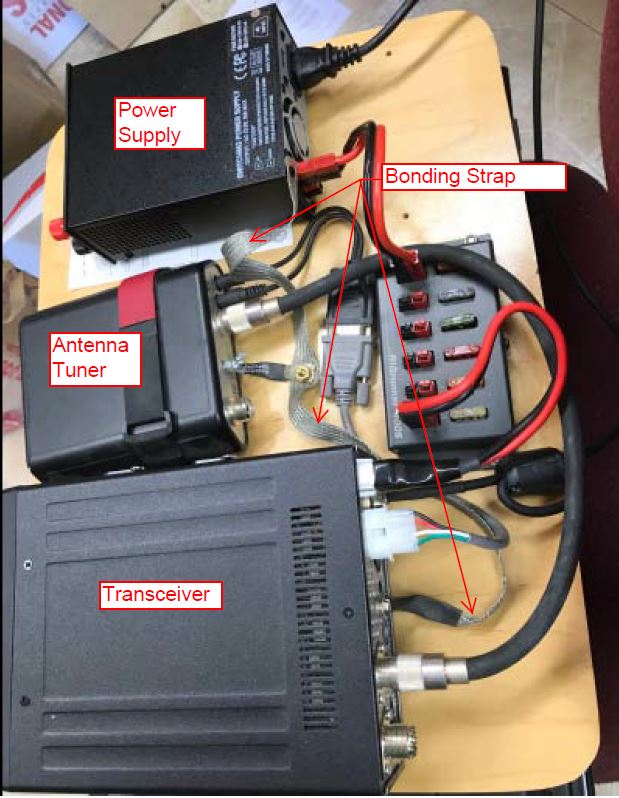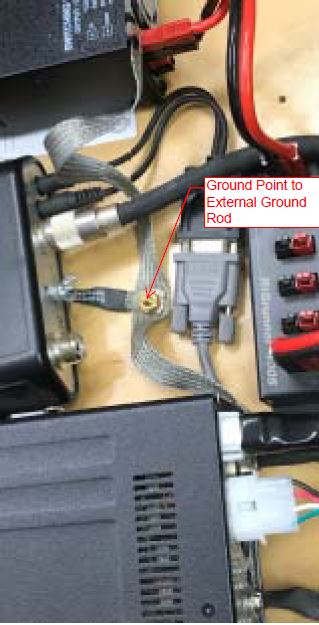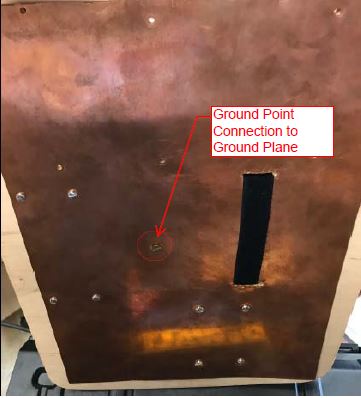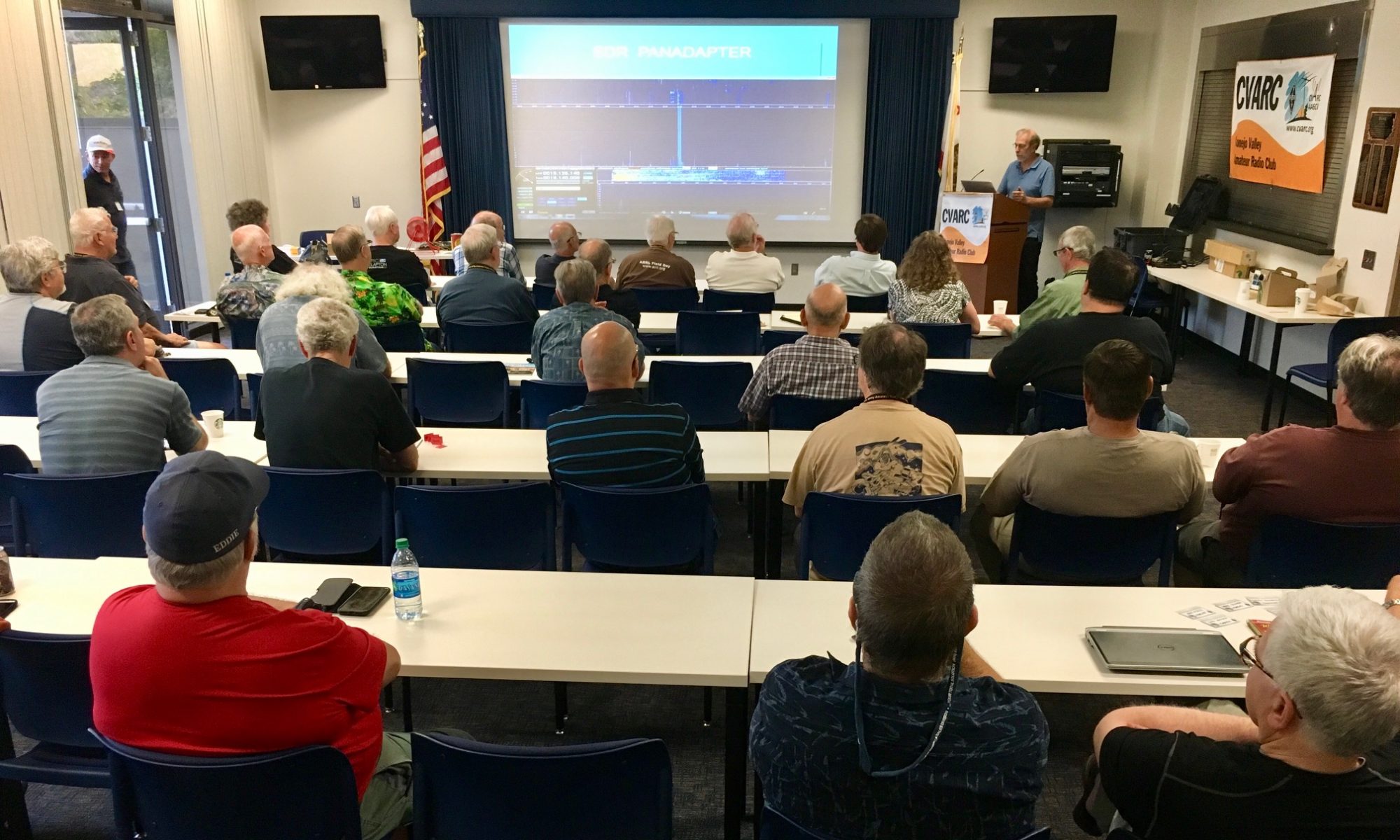Every cable connecting the components in an Amateur Radio Station can act as an antenna. Differential and common mode voltages and currents in these cables can result in interference and even an RF shock. Stations with more than a few components can benefit from RF bonding and ground planes.
Simply stated, RF Bonding is the interconnection of all the station component chasses with a low RF impedance bonding strap. If the bonding strap is also connected to a ground plane under the station and both the bonding strap and ground plane connect to a ground rod the possibilities of RF shock and RF interference are virtually eliminated.
Here is photo showing the bonding strap connecting a power supply, antenna tuner and transceiver all mounted on a board designed for portable or base operation.

This is a close up of the bonding strap including the ground point (the brass stud and nut in the center). To complete the RF Bonding system another bonding strap would connect this point to a ground rod. Notice all the RF bonding connections are directly to the chassis of each component. Use fasteners with good conductivity. Do not use a daisy chain to connect the components. The ground point stud connects to the ground plane on the bottom of the mounting board shown in the next photo.


The ground plane consists of a piece of sheet copper attached to the mount board by fasteners that also attach the station components to the board. (The black strap is part of the retainer for the antenna tuner and also acts as a handle). Sheet Aluminum is also a good ground plane material. You may have to look hard to see the brass screw in the middle of the ground plane that electrically connects the ground plane to the RF bonding strap.
Given all the hardware protruding from the ground plane, it is also a good idea to put a piece of packing or other foam between the ground plane and the surface the station sits on to prevent scratching furniture.
I have been using this set up for about 7 years and have never experienced an RF shock or component interference, even without an external connection to a ground rod.
An RF bonding bus will be provided for the CVARC field day to reduce RF interference between stations.
For additional information on RF Bonding and Ground Planes, see Grounding and Bonding for the Radio Amateur, H. Ward Silver, ARRL, 2017.
by Bill Willcox-KF6JQO

Great explanation, Stu.
I’m in process of grounding/bonding my new radios and and amps, etc.. I am using 24 gauge copper flashing. That seemed like a good idea at the time but that 16 oz per square foot material seems to be the standard in the construction industry is rather difficult to work with to say nothing of costly.
It seems to me that going to a higher gauge, like 30 to 32, would have the same result. Watchathink, Stu?
Cordially,
Ron, W9xs
Ron,
As I understand it RF is conducted on the surface of a conductor. From a theoretical point of view, the larger the surface area of the conductor, the lower the RF impedance, which decreases the differential voltage between components, and reduces interference.
However, as you point out, copper flashing is usually too thick to provide a practical ground strap. I prefer the woven mesh style ground strap. It has lots of surface area, is flexible, and relatively inexpensive. Best Regards, Bill Willcox KF6JQO